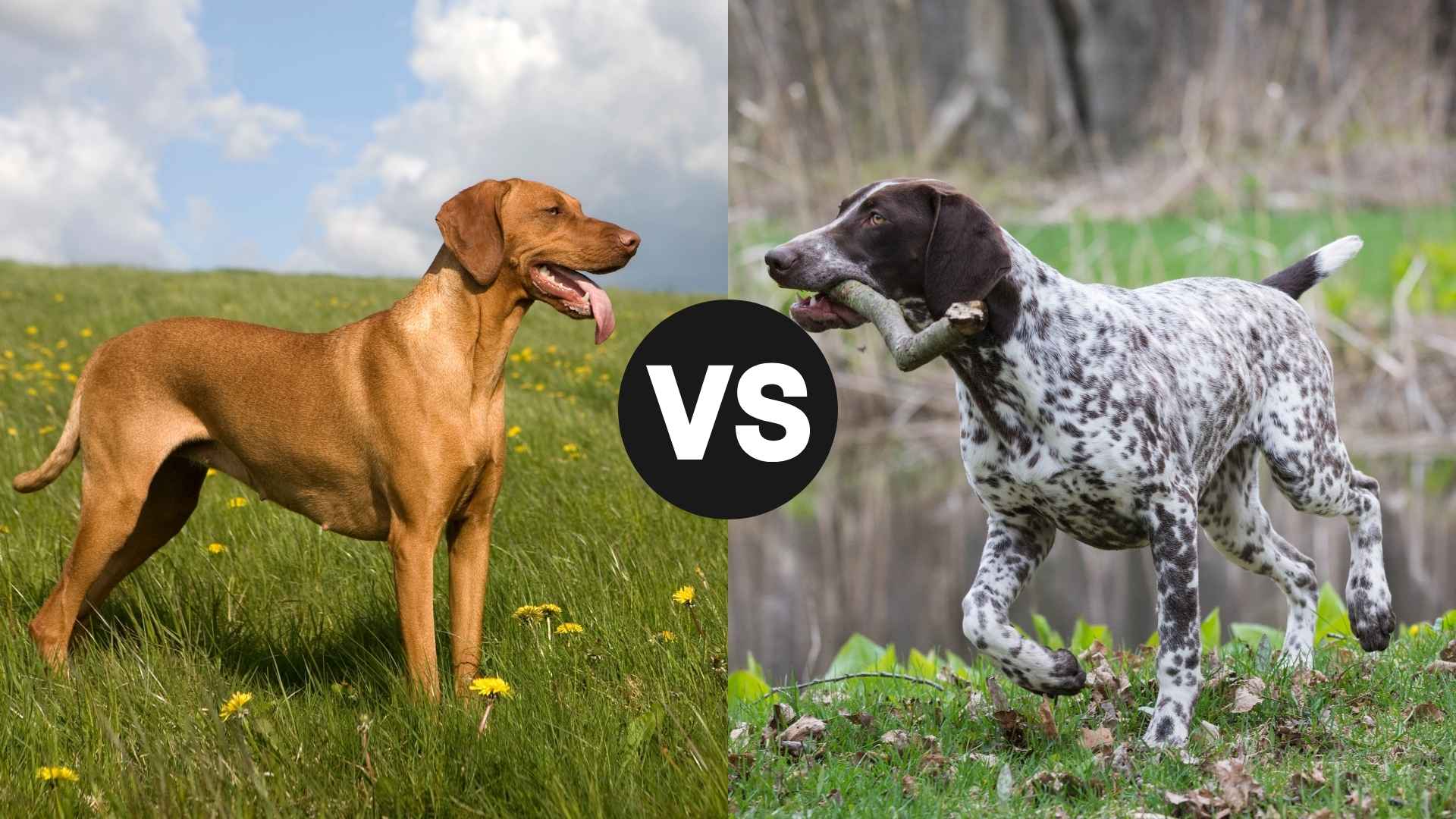If you’re stuck choosing between two loyal companions with boundless energy and a love for adventure, the Vizsla vs German Shorthaired Pointer debate is one you’ll want to explore. These breeds captivate active owners with their athleticism, affectionate nature, and sharp intelligence.
Known for their high exercise requirements, they thrive on mental stimulation, scent work, and bonding with humans. Both are considered velcro dogs—they stick close and dislike too much alone time.
From training challenges to temperament quirks, each offers a distinct personality that suits different lifestyles. Whether you’re into dog sports, looking for your first dog, or curious about grooming needs and energy levels, this side-by-side comparison reveals key differences that can guide your choice.
Vizsla vs. German Shorthaired Pointer
Vizsla vs German Shorthaired Pointer: Physical Size
At first glance, the Vizsla and the German Shorthaired Pointer appear similar in shape and structure, both showcasing a lithe, athletic frame. However, a closer look reveals key differences in their builds. The Vizsla is more refined and slender, often giving off an elegant impression. It has a smooth, tight coat that accentuates its muscular yet lean body, built more for sprinting and short bursts of speed.
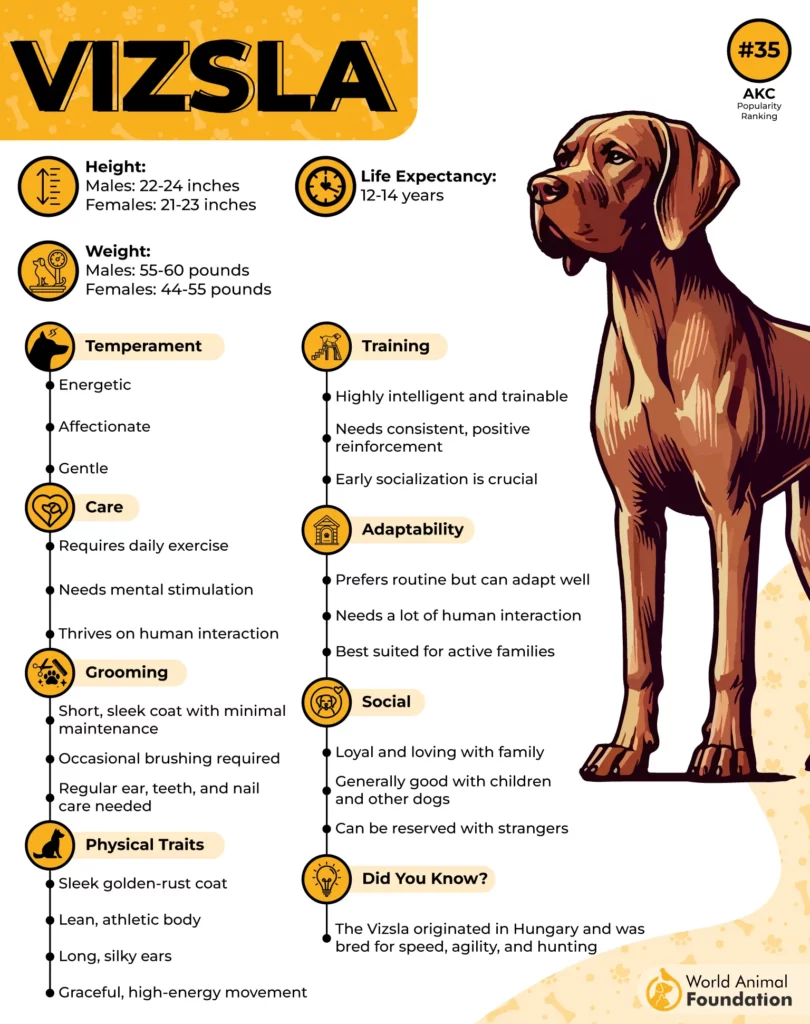
In contrast, the German Shorthaired Pointer has a more rugged, compact physique. It’s a bit bulkier, with broader shoulders and a deeper chest, ideal for extended pursuits and endurance hunting. This breed gives the impression of strength and stamina, more like a decathlete compared to the Vizsla’s sprinter-like poise. Its slightly coarser coat also adds to the sturdier aesthetic.
Males of both breeds typically stand around 23 to 25 inches, while females hover around 21 to 23 inches. Vizslas usually weigh 45–65 pounds, depending on gender, while German Shorthaired Pointers tend to weigh a bit more, averaging 50–70 pounds. Despite these modest differences, their proportions can influence how each dog navigates environments, from tight home spaces to open fields.
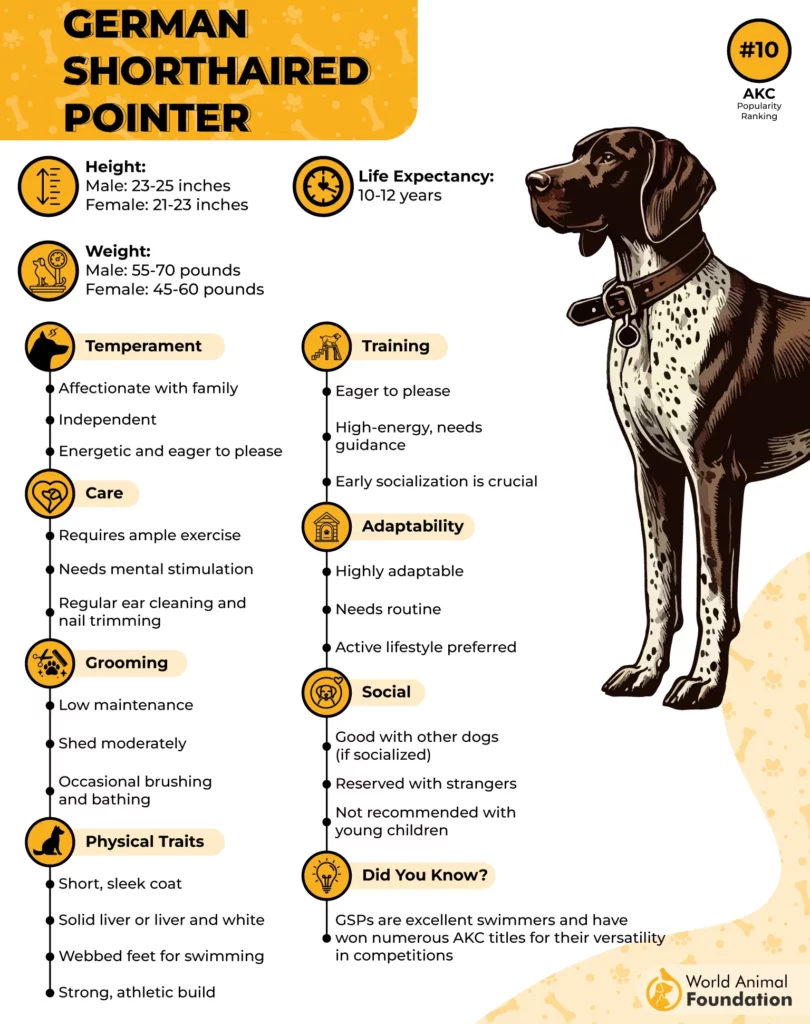
The Vizsla’s coat is a standout trait. Its single-layer, golden-rust fur lies close to the skin, giving the dog a sleek, polished look. The German Shorthaired Pointer sports a dual-layer coat that provides better insulation and weather resistance—an asset for a dog often used in rougher terrains and colder climates.
Overall, while both breeds are built for agility and action, the Vizsla offers elegance and grace, and the GSP brings muscle and resilience. If indoor space or visual preference is a deciding factor, their contrasting looks could be a tipping point.
Vizsla vs German Shorthaired Pointer: Heritage and Breeding
Understanding a breed’s roots often sheds light on its instincts and behavior. According to Britannica, the Vizsla has a noble lineage tracing back over a thousand years to Hungarian aristocracy. These dogs were favored by royalty for their versatility in pointing and retrieving. Unlike other hunting breeds, Vizslas were selectively bred not only for their hunting skill but also for their affectionate temperament, creating a dog that could work in the field by day and rest by the fireplace by night.

German Shorthaired Pointers emerged in 19th-century Germany with a different breeding focus: utility. German hunters aimed to create the ultimate all-purpose gun dog—one capable of trailing, pointing, and retrieving both on land and in water. The GSP’s ancestors include Spanish Pointers, scent hounds, and even bloodhounds, giving it a diverse genetic foundation geared for high-performance and versatility.
While the Vizsla was shaped in an aristocratic setting, the GSP was crafted by practical hunters. This contrast continues to influence their personalities today. The Vizsla’s historical role demanded closeness to its master, shaping its strong emotional bond with humans. Meanwhile, the GSP’s role required greater independence, resilience, and stamina.
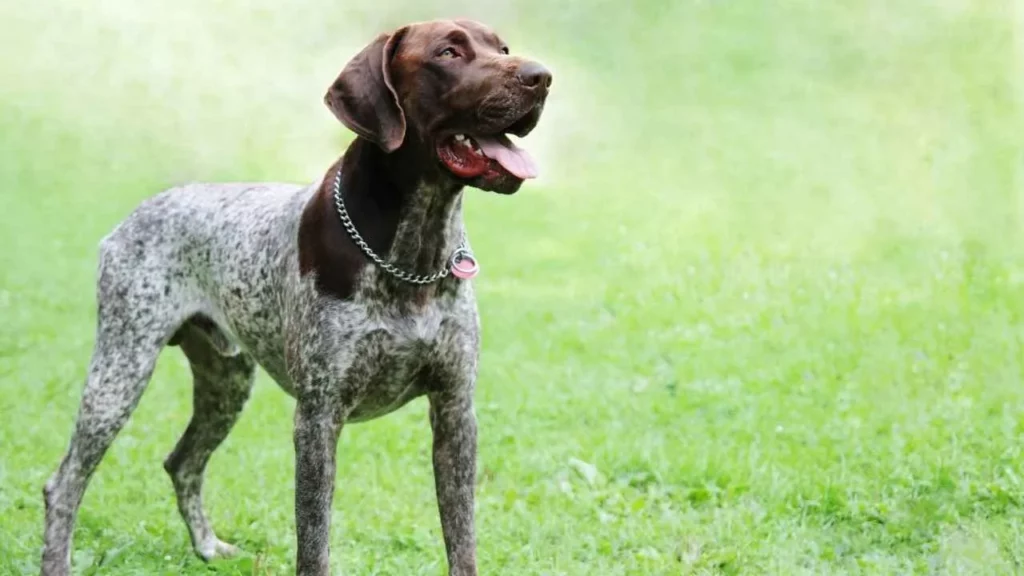
Their roles in modern times remain close to their origins. Vizslas are still favored as gentle family hunting dogs, while GSPs dominate in competitive field trials and active sporting circles. Both breeds, however, have successfully transitioned into loving household pets, provided they get enough exercise and stimulation.
In short, the Vizsla carries a legacy of elegance and emotional connection, while the German Shorthaired Pointer represents work ethic and functional versatility. These ancestral blueprints still influence their behavior and instincts today.
Vizsla vs German Shorthaired Pointer: Temperament
Temperament is one of the most important considerations when choosing a breed. The Vizsla is well-known for its gentle, affectionate, and almost clingy nature. Often nicknamed the “Velcro dog,” this breed craves constant companionship and tends to form intense bonds with its humans. It’s not uncommon for a Vizsla to follow its owner from room to room, resting its head on their lap or seeking eye contact just to feel connected.

According to AKC, the German Shorthaired Pointer, while affectionate and loyal, is noticeably more independent. These dogs are energetic and spirited, often happiest when they have a task to perform. GSPs enjoy spending time with their families but are generally more tolerant of being alone or entertaining themselves with toys and puzzles. This trait makes them slightly easier to manage for working households.
When it comes to training, both dogs are intelligent and eager to learn, but they approach it differently. Vizslas are highly sensitive and respond best to positive reinforcement and gentle correction. Harsh training methods can cause them to withdraw or become anxious. German Shorthaired Pointers, on the other hand, are bold and confident, requiring clear rules and consistency to thrive.
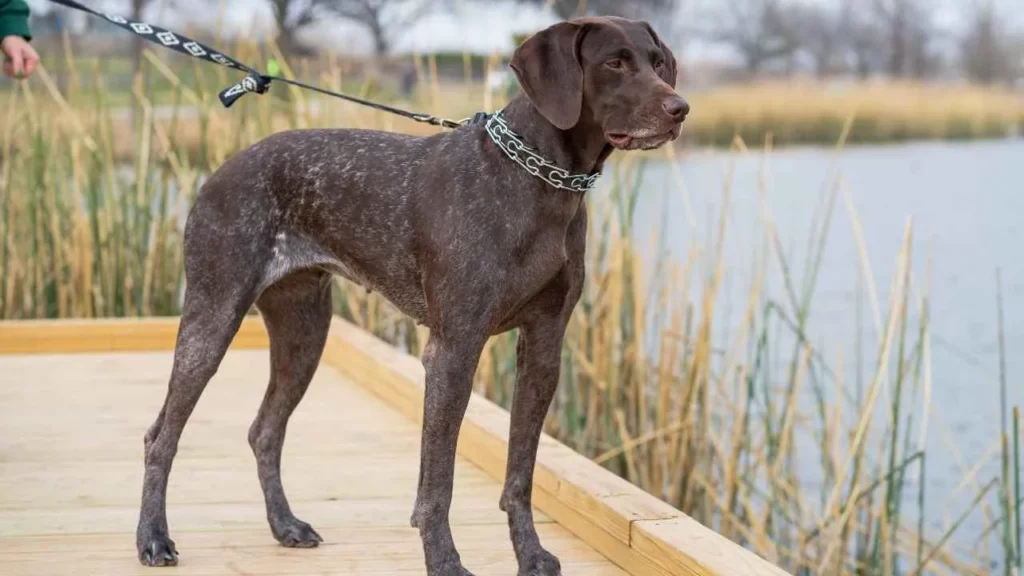
In terms of social behavior, Vizslas can be more reserved with strangers, often preferring to stick close to their trusted humans. GSPs tend to be more outgoing and curious, making them great at dog parks or in busy environments. However, both breeds benefit from early socialization to prevent behavioral issues.
Ultimately, the Vizsla is a heart-on-its-sleeve companion that thrives on closeness, while the GSP is a headstrong explorer who still makes time for cuddles after a long day’s adventure. Your temperament match depends on how much emotional attention and structure you can provide.
Vizsla vs German Shorthaired Pointer: Health Considerations
Though both breeds are generally healthy, prospective owners should be aware of some breed-specific medical concerns. For the Vizsla, one of the most common issues is hip dysplasia, a condition where the hip joint doesn’t fit properly, potentially leading to arthritis or pain. They’re also prone to epilepsy, hypothyroidism, and progressive retinal atrophy (PRA)—a degenerative eye disorder that can cause blindness.
Vizslas also have thinner coats and minimal body fat, making them more susceptible to cold weather and skin conditions. Their emotional sensitivity can translate into stress-related ailments, including digestive upsets and behavioral anxiety, especially when left alone for extended periods.

According to PetMD, German Shorthaired Pointers share some of the same orthopedic risks, especially hip dysplasia. But they are also more vulnerable to bloat (gastric torsion)—a potentially life-threatening condition. Other concerns include entropion (an eyelid disorder), cardiac issues, and ear infections, especially if they swim often.
Both breeds benefit from responsible breeding practices, regular vet visits, and preventative health care. Early screening for genetic disorders and joint issues can help catch problems before they worsen. Active lifestyles, balanced nutrition, and proper grooming also contribute significantly to long-term well-being.
Though these dogs are hardy and robust, staying proactive about their health will ensure they live long, comfortable lives. Choosing a breeder who tests for genetic diseases is essential in reducing risk and ensuring peace of mind.
Vizsla vs German Shorthaired Pointer: Lifespan
Both the Vizsla and the German Shorthaired Pointer offer relatively long lifespans for active, medium-large dogs. The Vizsla typically lives between 12 to 15 years, with many reaching their mid-teens in good health. Their lean bodies, low fat content, and moderate energy output help them age gracefully, especially if they receive plenty of mental engagement and physical activity throughout their lives.
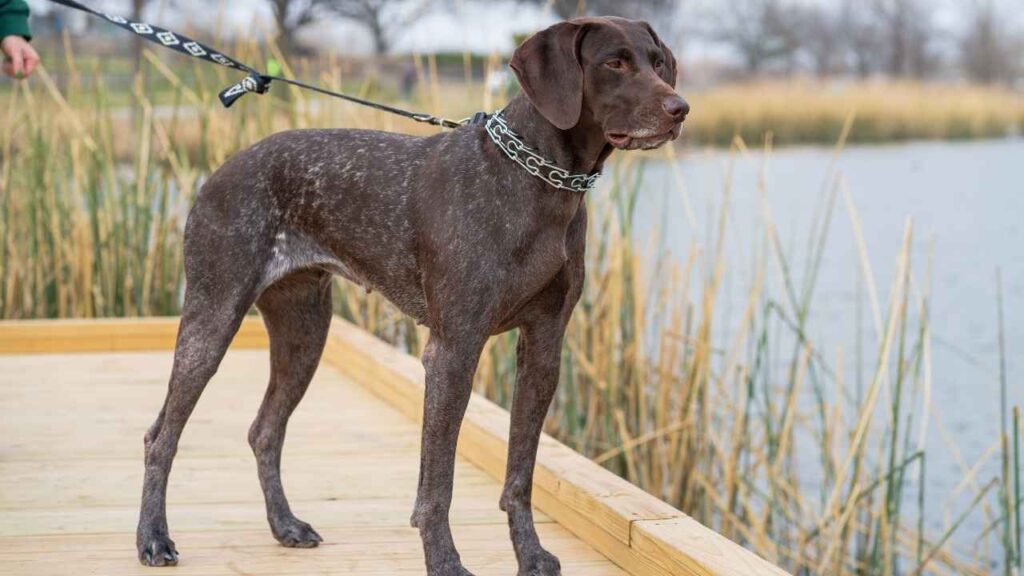
German Shorthaired Pointers average around 10 to 14 years, though some can live longer with attentive care. Because they are often more physically driven and exposed to more intense conditions, their joints and muscles may show wear earlier. Still, they remain energetic and alert well into their senior years if properly managed.
As both breeds grow older, they tend to slow down gradually rather than suddenly. Vizslas may become more emotionally dependent with age, while GSPs might mellow out but still crave some form of light activity or mental challenge. Owners should begin adjusting exercise routines, joint support, and dietary needs as early signs of aging appear.
Preventive care plays a key role in lifespan. Dental hygiene, regular veterinary visits, weight control, and avoiding overexertion in extreme temperatures can all increase quality of life. Additionally, both breeds benefit from mental stimulation, especially in their golden years.
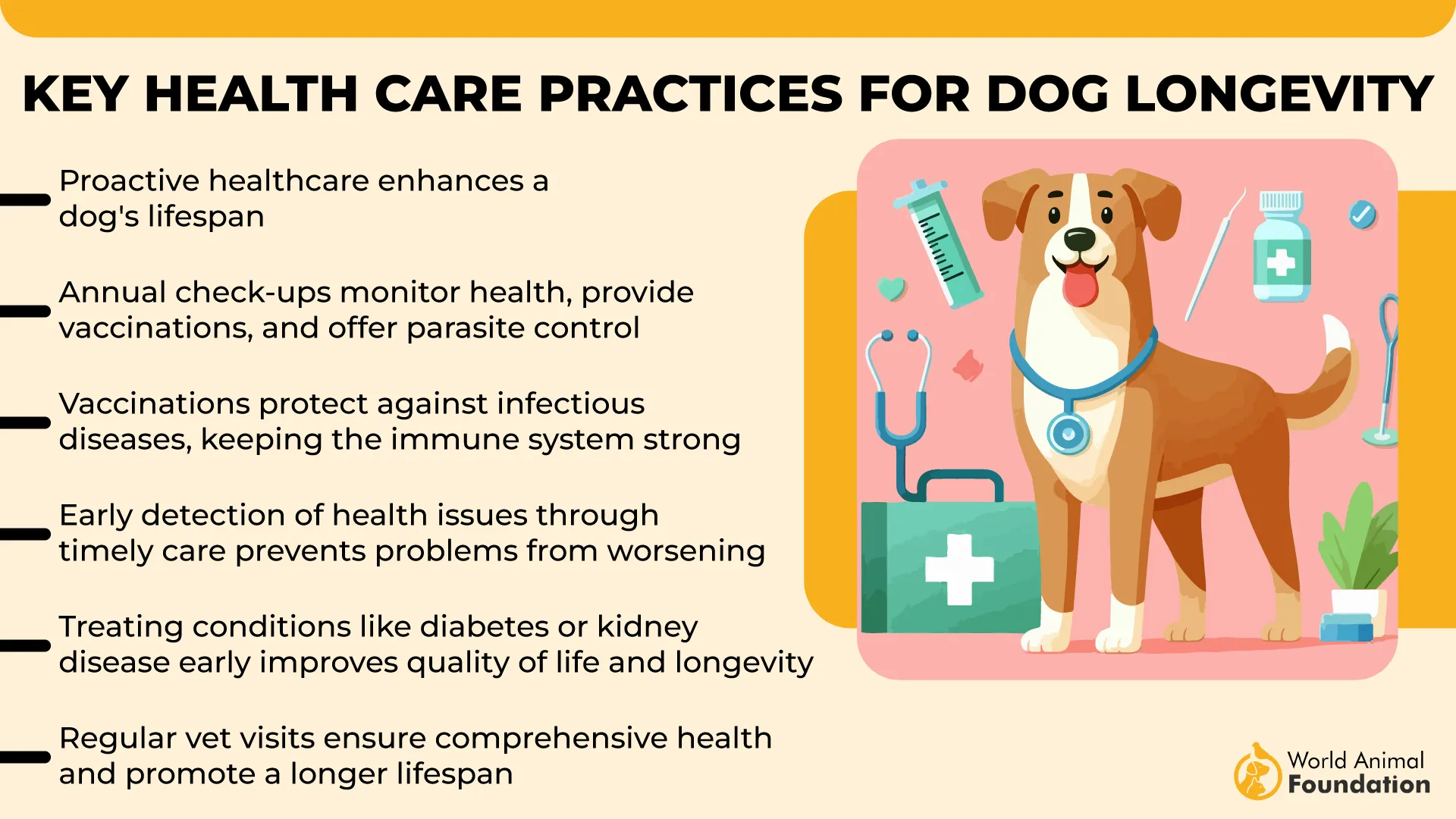
When considering either breed, it’s safe to say you’re investing in a loyal companion who will be by your side for over a decade. With attentive care and a bit of luck, either the Vizsla or the GSP can provide 12+ years of companionship, joy, and boundless energy.
Vizsla vs German Shorthaired Pointer: Exercise & Activity Needs
Both the Vizsla and the GSP are high-octane breeds built for endurance and action. These dogs are not suited for laid-back lifestyles—they crave movement and mental stimulation. The Vizsla, often nicknamed the “Velcro dog,” not only needs physical activity but also wants to do it alongside you. Whether it’s running, hiking, or agility, they shine when included in your plans.
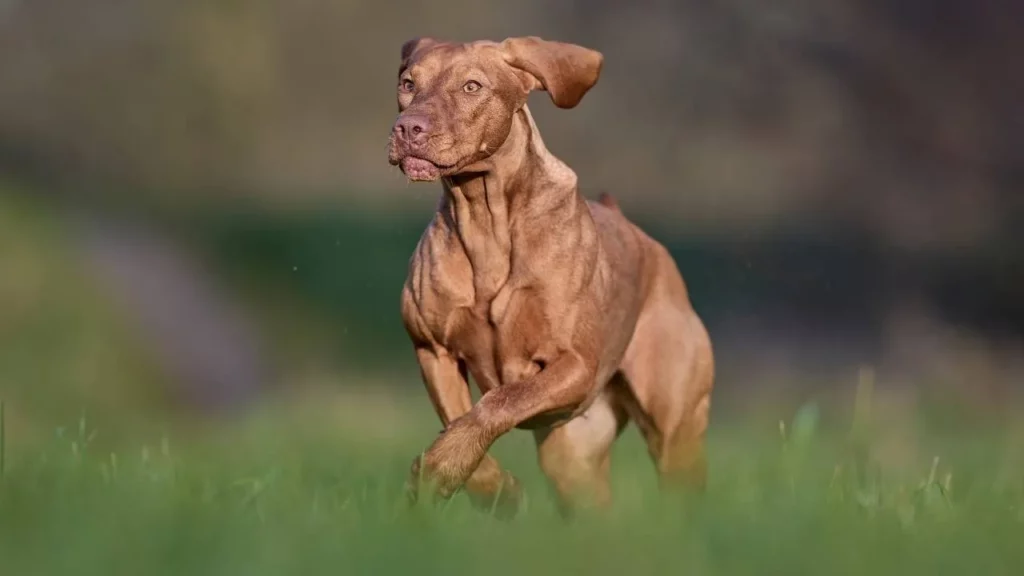
German Shorthaired Pointers are similar in energy demands but tend to have a slightly more intense drive for work. Originally bred to cover long distances while hunting, they benefit most from a job to do—whether that’s retrieving, scent tracking, or advanced obedience drills. GSPs aren’t just content with a walk; they need to burn fuel daily.
Neither breed is content with a simple backyard play session. Ideally, both should get at least 60 to 90 minutes of hard physical activity per day. That could mean off-leash running, trail adventures, or extended play sessions involving fetch or tug. Without enough exercise, they can become restless and destructive.
Mental stimulation is just as important as physical activity. Puzzle toys, training games, and interactive play can help tire them out in healthy ways. Vizslas may require more companionship during downtime, while GSPs tend to be slightly more independent if their exercise needs are fully met.
Vizsla vs German Shorthaired Pointer: Grooming & Shedding
One of the major perks of both the Vizsla and the GSP is their low-maintenance grooming routine. With short, sleek coats, these breeds don’t require complicated care, yet there are some differences in their shedding and upkeep. The Vizsla has a single-layer coat that lies close to the skin and sheds minimally throughout the year.
The German Shorthaired Pointer has a slightly denser coat with a double-layer, which means they tend to shed more, particularly during seasonal changes. You’ll notice more hair around your home compared to a Vizsla, especially in spring and fall. Weekly brushing helps control loose hair and keeps their coat healthy.
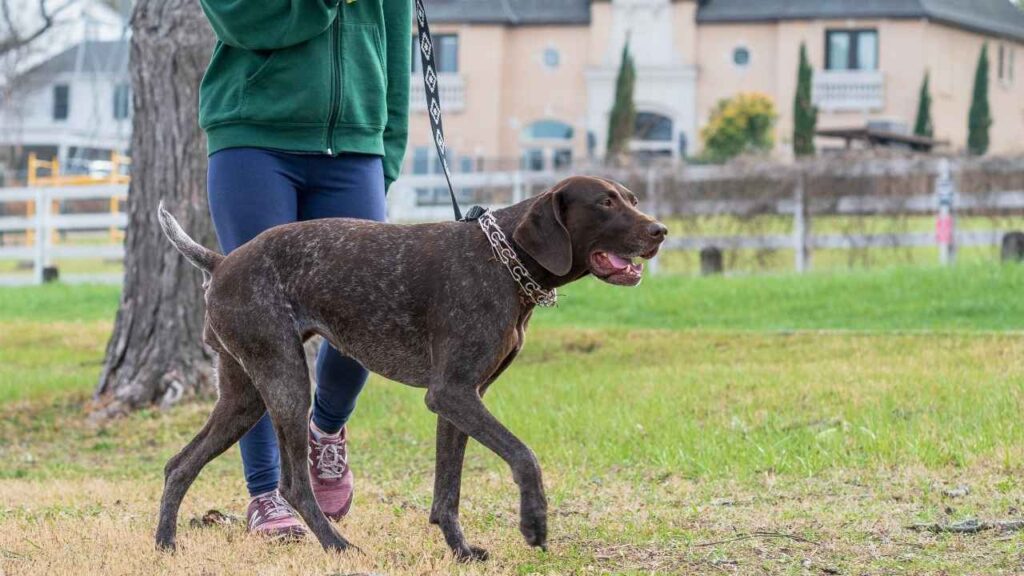
Bathing requirements are minimal for both dogs. A bath every 4 to 6 weeks—or after a muddy adventure—is usually enough. Overbathing can strip their skin of natural oils, so using a gentle dog shampoo is recommended. Vizslas have a faint, clean scent naturally, while GSPs may smell a bit “doggier” due to their double coat.
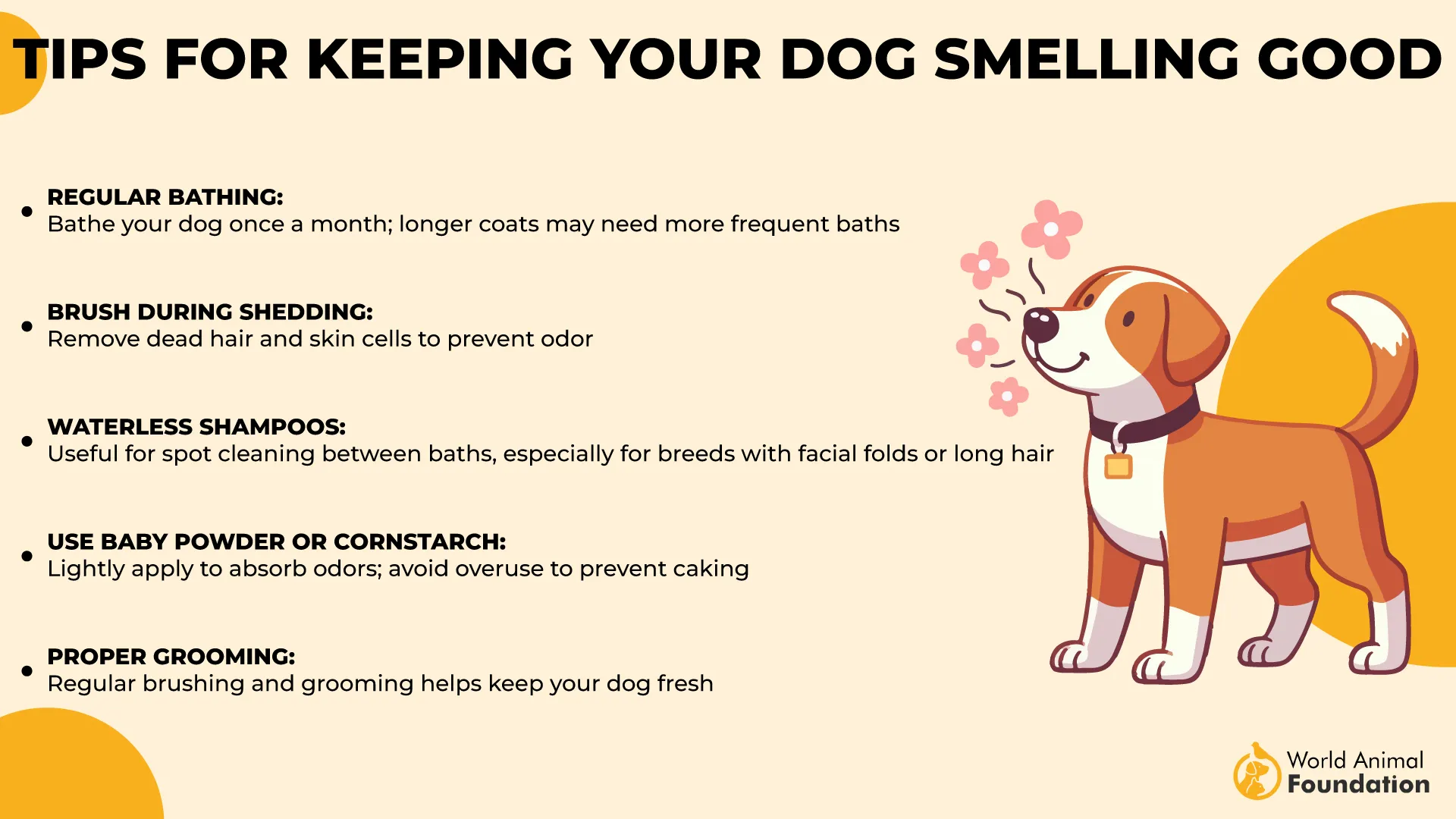
Ear cleaning and nail trimming are equally important. Both breeds can be prone to ear infections if water or debris gets trapped after outdoor activity. Regular checks and cleaning can prevent issues. Their nails grow quickly, too, so clipping or grinding once or twice a month is advisable.
Overall, if you’re looking for a dog that doesn’t require professional grooming or complex care, both breeds fit the bill. Vizslas win slightly in the low-shedding department, while GSPs require just a touch more attention to coat maintenance due to their heavier shedding periods.
Vizsla vs German Shorthaired Pointer: Family Compatibility
In terms of family dynamics, both the Vizsla and GSP are incredibly loyal and affectionate dogs that love being part of a household. Vizslas, however, are often more emotionally sensitive and tend to thrive best in homes where they’re showered with attention and involved in day-to-day life. They’re often happiest with families who include them in every activity.
GSPs, while also people-oriented, can be a little more independent. They’re great with active families and can develop strong bonds with older kids who enjoy play and outdoor adventures. They may be a bit overwhelming for very small children due to their high energy and tendency to jump when excited.
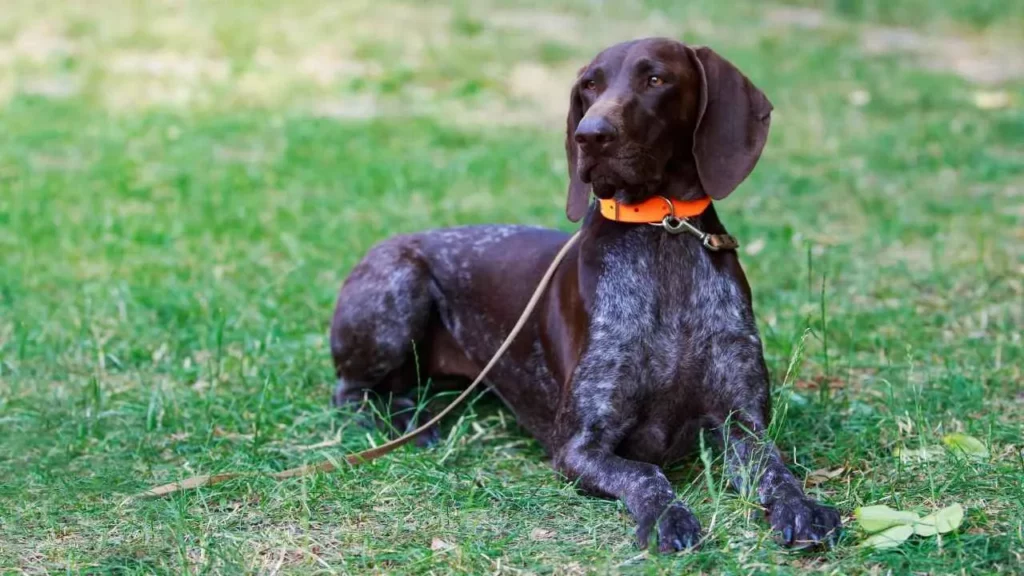
Both breeds can coexist well with other dogs, especially if raised with them from a young age. However, small pets like rabbits or birds may trigger their hunting instincts. Supervision and proper introductions are key, especially with GSPs, which can have a higher prey drive.
Vizslas can suffer from separation anxiety if left alone too often, which can lead to undesirable behavior like chewing or digging. GSPs handle alone time a little better, but still prefer to be around people. Neither breed is a good fit for a household that’s frequently empty.
For families that spend a lot of time outdoors and are looking for an interactive, energetic companion, both dogs are great matches. If your home is more emotionally driven or your family has younger children, the Vizsla may be the gentler, more intuitive choice.
Which Breed Is Right for You?
Choosing between the Vizsla and the German Shorthaired Pointer ultimately depends on your lifestyle, personality, and household dynamics. If you’re looking for a devoted, emotionally intuitive dog that thrives on companionship and physical closeness, the Vizsla may be your perfect match.
However, if you’re drawn to a more work-driven, independent dog that still bonds deeply with its family but can handle a bit more autonomy, the GSP could be ideal. They’re particularly well-suited to those who want a sporting or hunting companion with strong instincts and stamina.
Families with younger children or those seeking a gentler indoor companion may find the Vizsla’s soft temperament more fitting. Active singles, couples, or families with outdoor hobbies may appreciate the GSP’s tireless drive and adventurous nature.
Consider your environment as well. Urban dwellers with a solid outdoor routine might lean toward the Vizsla, while those with a yard and open trails nearby could give the GSP a better quality of life. Both breeds require time, attention, and energy, so be ready for a long-term commitment.
You can’t go wrong with either breed if you’re prepared for their needs. Spend time with both, talk to owners and breeders, and see which personality aligns more closely with your own. That connection will help guide your choice far better than a checklist ever could.
Conclusion
Deciding between the Vizsla vs German Shorthaired Pointer ultimately comes down to your lifestyle, experience, and what you want in a loyal companion. Both are active dogs with a high energy personality and thrive in homes that offer ample exercise and mental stimulation. These velcro dogs adore human companionship and tend to stick close, which can be ideal for first-time owners who enjoy constant company. However, they don’t handle alone time well and may become destructive if left without enough to do.
If you’re drawn to a slightly calmer temperament with solid scent work skills, the German Shorthaired Pointer might win you over, especially if grooming needs are a concern. But if you’re seeking a breed known for eager loyalty and emotional sensitivity, the Vizsla breed shines with its affectionate charm. Regardless of choice, positive reinforcement, proper socialization, and consistent training from an early age will ensure these intelligent dogs grow into exceptional companions for active families with kids, other pets, or even those venturing into dog sports like agility or quail hunting.


